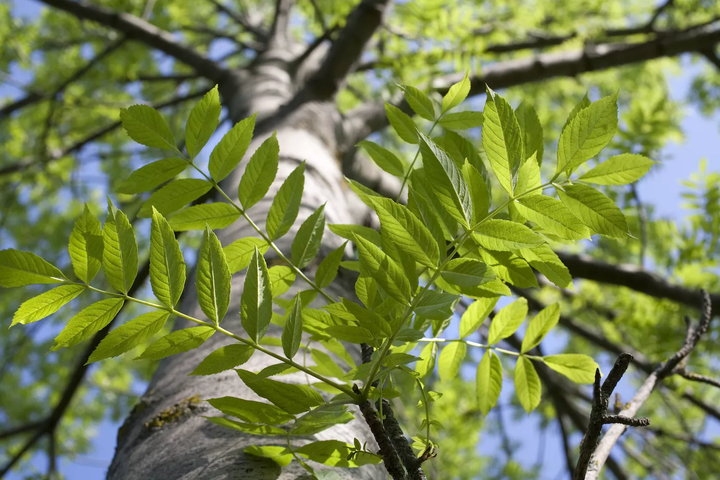
The name blue ash comes from the fact that the inner bark turns blue in the air and was used to make dye. A distinctive characteristic of this species is the square shape of young shoots. In mature trees, the gray bark forms irregular plates. The leaves form clusters of seven to 11 leaflets, turning gray and dull yellow in the fall. This is regarded as one of the best ashes for dry locations, though it also does well in medium-wet sites.
Traditionally used as a shade tree or street tree, blue ash is reported to have a considerably higher survival rate in areas infested by emerald ash borer, possibly due to some inherent genetic resistance, though it is not as resistant as some Asian species.
Native Area: Midwestern U.S.
USDA Growing Zones: 4 to 7
Height: 50 to 70 feet
Sun Exposure: Full sun